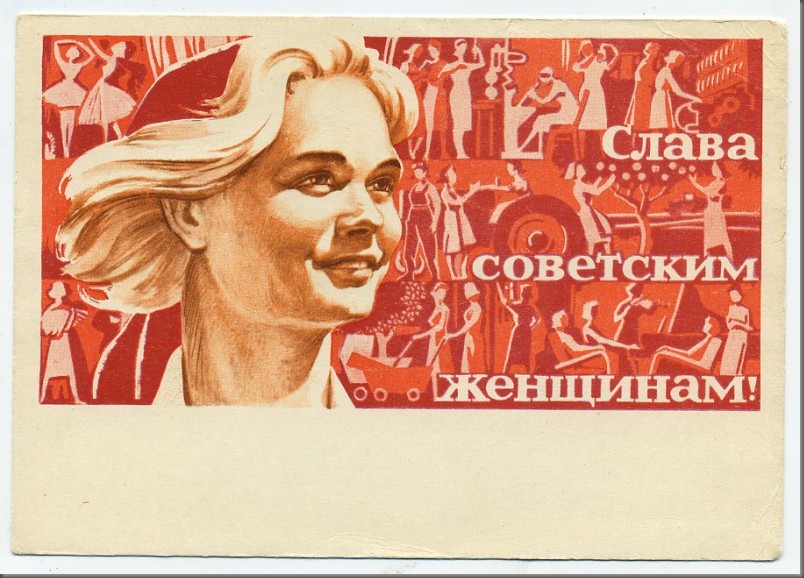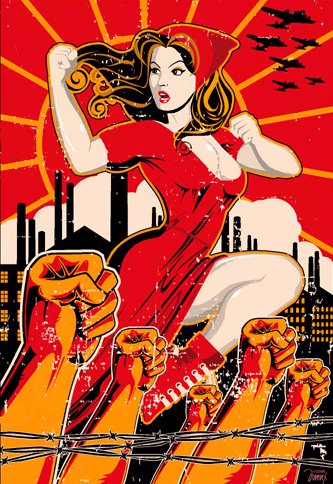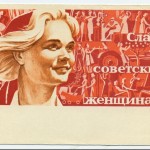The Women of the Revolution
by Karine Ter-Grigoryan
This research guide should provide a starting point for someone seeking to gain further knowledge on the role of women during the tremulous period of the violent exchange of power from Imperial to Bolshevik Russia. the guide will begin with the late Imperial woman (both peasant and noble) then flow into their roles in the October Revolution and ending with what it truly means to be a “new Soviet” woman. The roles of women have always been integral to Russian history, whether they have been direct impacts like Alexandria and her influence over Tsar Nicholas II and the women’s battalion involved in the storming of the Winter Palace or more of an indirect impact through the joint efforts in raising children and families as a part of the new “Soviet” agenda.
During the reign of Tsar Nicholas II, the roles of women didn’t vary much from mother/nurturer, worker (if you were a peasant), and wives of dignitaries (if they were nobles). Their social mobility didn’t progress further than them achieving motherhood or marriage into a prominent family. With the wave of social revolution under Marxist Lenin and the other Bolsheviks, women were afforded opportunities in social mobility like participation in the military and higher forms of education for the peasant/workers. This new freedom allowed women to be able to break free from the home and join their male counterparts in academic fields as well as fields of battle.
The major changes that lead to the evolution of the women’s roles came from the wave of Marxist revolution that sought to equalize the differences between not only genders, but classes as well. Once women from all classes (whether bourgeois or peasant) were equal, they could begin to seek change and opportunities that had once been denied to them. A perfect example is the creation of Women’s Battalion after the February Revolution in an effort to instill hope in weary soldiers in World War I. Though they were created with an alternate purpose, the Red Army 1st Russian Women’s Battalion of Death (women fighting on the other sides of the Civil War were never formally recognized) was able to push past German enemies were their male counterparts hesitated. Through these battalions volunteer women were also allowed the ability to learn to read and write, which was not option a peasant farmer girl would have had the chance to learn.
For the first time in Russia, women who were not born into or married into nobility had the opportunity to rise above their birth status and become diplomats. Though Aleksandra Mikhaylovna Kollontay married an Imperial general, she denounced her privileged status and took up the cause of the Russian Social-Democratic Workers Party where she eventually became the commissar for public welfare after the October Revolution for the Bolshevik party. She even went on to conduct the truce that ended the Soviet-Finnish war in 1944. A role like this would not have been possible for someone of her status had it not been for the Great Revolution.
Complied here is list of sources that walk through the transformation of what was function of women before and after the revolution. Including a multimedia eyewitness account, texts about the differences of working in the city and working on the fields as a woman, and some sources of how the changes of women fit into the grand scheme of the nation. The majority of the compiled sources below are primary sources, historiographies, and some biographies. The works that have been compiled fit into one of the three broader themes: women (off all classes) during the days of the Imperial Regime, the destruction of the noblewoman and the elevation of the peasant woman during the Revolution, and the creation of the “New Soviet” woman during the early years of the Soviet Republic.
– What was role of women during the Tsarist regime?
– What was the difference between how the educated women (nobles) reacted and how the peasant’s reacted?
– What was the role of the “Soviet” woman?
– Was it better to be a “Soviet” woman or a pre-Soviet woman?
– What does it truly mean to be a new “Soviet” Woman? Why is she significant to the Revolution and the history of women?
– How did the perception of women change from the Imperialist regime to the Soviet Era?
Peasant Women pre-Revolution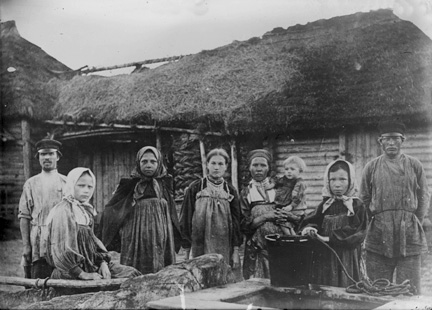
- Aleksandra Mikhaylovna Kollontay
- Encyclopedia Britannica Online, s. v. “Aleksandra Mikhaylovna Kollontay,” accessed November 01, 2013.
- Aleksandra Kollontay is included in the research because she was born in the few years before Tsar Nicholas II took the throne and died a year before Joseph Stalin. She was an essential revolutionary advocate of radical changes to traditional social customs by preaching free love. She was also the very first woman to serve as an accredited minister to a foreign country (Norway, Mexico, Sweden). She was also the person responsible for the arrangement of a treaty between Finland and the Soviet Union during the Second World War.
- Encyclopedia Britannica Online, s. v. “Aleksandra Mikhaylovna Kollontay,” accessed November 01, 2013.
- Attwood, Lynne. Creating the New Soviet Woman. New York: St. Martens Press, 1999.
- It is now secret that women all around the world have used magazines like Cosmo and Vogue to determine their next season’s fashion choices. Magazines have been aiding the fashion industry by playing the middleman between the runway and the actual consumer since their inception. Attwood localizes her study to discern the conversion from pre-Civil War and wartime of how women carried, clothed, and considered themselves. Her study then fast-forwards to analyze the changes under the iron-fist of Stalin and how the image of what a woman was supposed to represent when the prevalence of motherhood and domesticity returned to the main stage of life.
- Bridenthal, Renate, and Claudia Koonz. 1997. Becoming visible: women in European history. Boston: Houghton Mifflin. 3rd edition
- Chapter 15:”Women and the Revolutionary Process in Russia,” Stites
- In his chapter in Becoming Visible, Richard Stites chronologically details the transformation of a women during the revolutionary era. He begins with an overview of the state and society where he lays the themes of sex, sexuality, gender roles and how social roles affect the patterns of the family. He goes on to discuss the Nihilism and how that is combination with Chernyshevsky’s utopian, socialist ideals kindled the thirst for feminism. The role of industrialization with regards to class and gender creates the bridge between the women of the upper and lower classes. The reason that Stites’s essay is one of the major one’s in the research can be seen with his analysis of the role of women and how they were impacted by the liberation provided by the revolutionary era and the impact of Stalin’s counter-revolution.
- Chapter 15:”Women and the Revolutionary Process in Russia,” Stites
- Bridenthal, Renate. 1987. Becoming visible: women in European history. Boston u.a: Mifflin.
- Chapter 16: “Women and Communal Strikes in the Crisis of 1917-1922,” Kaplan
The Imperial Four

- Bridenthal, Renate. 1977. Becoming visible: women in European history. Boston u.a: Mifflin.
- Chapter 15: “Women as Revolutionaries: The Case of the Russian Populists,” Engel
- Chapter 16: “Love on the Tractor: Women in the Russian Revolution and After,” Rosenthal
-
Chatterjee, Choi. Celebrating women: gender, festival culture, and Bolshevik ideology, 1910-1939. Pittsburgh, Pa.: Univ
- Clements, Barbara Evans. 1994. Daughters of revolution: a history of women in the U.S.S.R. Arlington Heights, Ill: Harlan Davidson.
- Clements book shows the reader what it means to be a “Soviet Women”. The New Soviet Woman is a Superwoman who is able to balance the competing responsibilities of being a worker and being a domestic. She is able to take on the roles of the good Communist citizen, full-time worker, and the capable wife and mother to the future generations of the rising proletariat.
- Working-Class and Peasant Women in the Russian Revolution, 1917-1923
- Clements, Barbara E. “Working-Class and Peasant Women in the Russian Revolution, 1917-1923.” Signs, Vol.8, No. 2 (Winter, 1982). 215-235. http://www.jstor.org/
- In this article, Clements goes in-depth to describe how peasant and city women were instrumental to the Bolshevik coup d’état of the Provisional Duma government. Women of the cities with their “weakened” traditional values” were much more susceptible to the Bolshevik ideologies, while women who weren’t exposed to these values directly found the traditional call of domestic life to be much more paramount. Though Bolsheviks did attempt to compel their ideology on everyone, they obviously had more access to those in cities than in the countryside. She discusses that because of the shortages and suffering caused by the Civil War, the perpetuation of the Marxist-Bolshevik philosophy hit a mammoth roadblock. One of Clements main points is that the ideology that they were being exposed to wasn’t that much of a draw, and those that fell victim to Lenin’s oratory were those who had no roots in domestic life and did not see themselves in the role of a mother. This article is essential to the understanding of not only the comparison between the city and the village but also how the Bolshevik regime went about their brainwashing techniques.
- Clements, Barbara E. “Working-Class and Peasant Women in the Russian Revolution, 1917-1923.” Signs, Vol.8, No. 2 (Winter, 1982). 215-235. http://www.jstor.org/
Peasant Women during the Revolution
- Engel, Barbara Alpern. (1994). Between the Fields and the City: Women, Work, and Family in Russia, 1861-1914. Cambridge: Cambridge University Press.
- In this book, Engel outlines the significance and ramifications of the migration of Russian peasant women from their villages into the factories in nearby cities after Alexander II in 1861 until the outbreak of WWI on the socio-economic world. Engel’s uses several case studies to delve into the effects of urbanization and industrialization on migrant households and interpersonal relationships. She also discusses how the process of mass female emigration into the workforce allowed women to be more mobile in such a rigid, patriarchal world. Engel’s study differs from others in the same field because she is probably the first to use archival data to in interpreting personal lives at both the village and bigger city level. Her research shows that the options in city work may have been overestimated, and her look at the family sheds new light on the social history of the final years of the Imperial regime.
- Fitzpatrick, Sheila, and Yuri Slezkine. 2000. In the shadow of revolution: life stories of Russian women from 1917 to the second World War. Princeton, NJ: Princeton University Press.
- This text is a collection of 42 life stories from Russian women who had lived through the first half of the twentieth century in Soviet Russian and then later immigrated. The reason this compilation of memoirs, oral interviews, speeches, and letters is so meaningful is that it ranges from women who were no more than farm girls to noble intelligentsia women who record their distinct experiences. The autobiographies give a comprehensive look at the lives of these women from the births of children to their reactions during beginning with landmark events such as: the February and October Revolutions, Lenin’s NEP policy, and Stalin’s Great Terror. With this text the reader can get diverse first-hand accounts of the events that shaped Russia for the greater part of a century.
- Gleason, Abbott, Peter Kenez, and Richard Stites. 1985. Bolshevik culture: experiment and order in the Russian Revolution. Bloomington: Indiana University Press.
- Chapter 13: The Birth of the New Soviet Women by Barbara Evans Clements
- Chapter 14: Village Women Experience the Revolution by Beatrice Farnsworth
-
Goldman, Wendy Z., Women at the Gates: Gender and Industry in Stalin’s Russia (Cambridge: Cambridge University Press, 2002)
- Heitlinger, Alena. Women and State Socialism. Montreal: McGill-Queen’s University Press, 1979.
- Contrary to popular belief, the roles of women in the workforce and in politics began shift before the Marxist socialist took complete control of Russia after the Great October Revolution of 1917. As Heitlinger states, Russian women had begun a slow integration into the workforce because of the positions made available by soldiers leaving for WWI. Women had also begun the slow process of gaining equality with their male counterparts in socio-political conditions. As Heitlinger discusses, the process was slow because of the problems with the defining the exact terms of equality and how went about how women “gained” the rights they received after the revolution. Heitlinger discusses how the different republics that made up the entirety of the Soviet Republic couldn’t agree on what were and were not rights and how it caused discord.
- Hickey, Michael C. 2011. Competing voices from the Russian Revolution fighting words. Santa Barbara, Calif: Greenwood.
- [Chapter 5: What the Revolution Means to Me, Part II: Clergy, Peasants, Aristocratic Landowners, Women, and National and Religious Minorities]
- Shows how people of the above mentioned classes reacted to the toppling of the Imperial regime, the “Whites” versus the “Reds” struggle, and then how they dealt with the emergence of the proletariat. Hickey’s compilation of these first hand accounts is vital to the research.
- [Chapter 5: What the Revolution Means to Me, Part II: Clergy, Peasants, Aristocratic Landowners, Women, and National and Religious Minorities]
The New Soviet Woman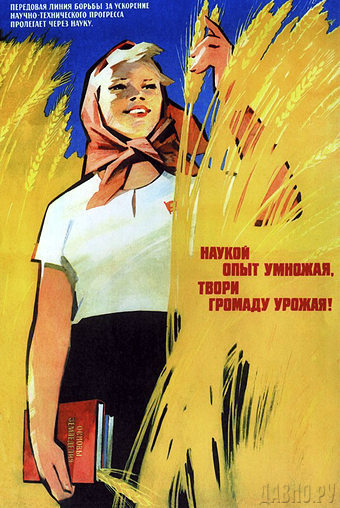
- International Womens Day
- Encyclopædia Britannica Online, s. v. “International Women’s Day (IWD),” accessed November 01, 2013.
- International Women’s Day is being included in this guide because it is a day celebrating women’s achievements and promoting women’s rights as well as their suffrage. It is a national holiday that is celebrate all around the world (though it was originally created by a American Socialist party on March 19, 1911). The reason it is so fundamental to the research is because IWD is not in fact celebrated on March 19. Instead, it is celebrated on March 8th because of the women of St. Petersburg. On that day in March women joined their husbands and brothers in striking in protest participation in the Great War which was causing a drain on the food supply. It is this February Revolution that is responsible for the downfall of the Romanov dynasty and ensuing Russian Civil War. The official date of IWD was changed to March 8th in 1921 and it has been sponsored by the United Nations since 1975.
- Encyclopædia Britannica Online, s. v. “International Women’s Day (IWD),” accessed November 01, 2013.
- Lapidus, Gail Warshofsky. Women in Soviet Society Equality, Development, and Social Change. Berkeley: University of California Press, 1978.
- This text will be utilized because it shows the innovative development that women went through in the Soviet society. The main focus that will be drawn from will be the equality, the development of the society that eventually leads to social changes in the era. The book covers the concepts of social stratification that comes when women begin gaining equality with men, how it affects the work environment, and the changes adjustment to their domestic roles. Since this text shows a complete view of what exactly were women’s roles in the emerging Soviet society it will be an integral part of the overall paper.
- Library of Congress: Soviet Union (Former)
- Library of Congress, “A Country Study: Soviet Union (Former).” Last modified July 27, 2010. Accessed August 4, 2013.
- Through research the Library of Congress has become a vital source that itself has compiled an index/ table of contents page for each country. The USSR page contains over 30 sections on the roles of women pertaining not only to various roles in socioeconomic world of Russia, but also the workforce, and politics. This index is a vital resource that can provide a key insight into the lives of Soviet women
- Library of Congress, “A Country Study: Soviet Union (Former).” Last modified July 27, 2010. Accessed August 4, 2013.
- Phillips, Laura L. “In Defense of Their Families: Working-Class Women, Alcohol, and Politics in Revolutionary Russia,” Journal of Women’s History 11, no. 1
- Pravda Severa, “Maria Semenovna Require Assistance from the Party Collective,” September 9, 1932. In Women in World History, 2006.
- Rule, Wilma, and Norma C. Noonan. 1996. Russian women in politics and society Westport, Conn: Greenwood Press.
- Russia’s Great War & Revolution
- “Women Soldiers in Russia’s Great War” Russia’s Great War & Revolution, www.russiasgreatwar.org (2013).
- This page is integral to the research because it discusses the involvement of women in the Great War (WWI), which was an unprecedented move. Though history has been quick to forget their impact because they fought on the losing side of the war. Before the creation of sexually segregated units, women would disguise themselves as men to be able to participate in combat. They came from all over the geographic region with different social and educational backgrounds. The ones with higher social standing would even use their power and influence to enter into active combat alongside their husband or brothers. Commanding officers would often praise women for their capability to withstand combat conditions and show great courage in the face of adversity. After the war ended, many progressive women demanded greater participation in the political world and inclusion in higher social spheres as a reward for their service.
- “Women Soldiers in Russia’s Great War” Russia’s Great War & Revolution, www.russiasgreatwar.org (2013).
- Ruthchild, Rochelle Goldberg. 2010. Equality & revolution: women’s rights in the Russian Empire, 1905-1917. Pittsburgh, Pa: University of Pittsburgh Press.
- In this book, Ruthchild argues that the achievement of women gaining the right to vote in 1917 has been minimized by history because it has been constituted as “bourgeois feminism” and neglected because of gender. In studying the change and continuity f the roles of women in the late-Imperial era, Ruthchild shows how the women’s political movement fused with the overall populace unrest to put another nail in the tsarist coffin. The effect that Ruthchild goes to great lengths to show is the link that was forged between the feminists and those behind the radical movement through connections and shared experiences. She commends the creation of “International Women’s Day” tie between the ideologies because it was on that day that women joined with men on the streets demanding food, and persuading their co-workers to walk-out. Though, Ruthchild does state that after the proletariat triumphs over the Imperial regime, neither the Mensheviks nor the Bolsheviks prioritize their female comrades.
- Stites, Richard. 1988. Equality, freedom & justice: women & men in the Russian revolution, 1917-1930. Jerusalem: Hebrew University of Jerusalem, The Marjorie Mayrock Center for Soviet and East European Research.
- With Richard Stites research paper, the reader will be able to analyze the wave of feminism that followed after the Civil War and the call for voter equality by women. His work has been cited in many of the other works on this list and under feminism during the Russian Revolution.
- Stites, Richard. The women’s liberation movement in Russia: feminism, nihilism, and bolshevism, 1860-1930. Princeton, N.J.: Princeton University Press, 1978.
-
Wood, Elizabeth A.. The Baba and the Comrade gender and politics in revolutionary Russia. Bloomington: Indiana University Press, 1997.
YouTube Media:
- http://www.youtube.com/watch?v=933jsB5ChlA
- An interesting video that I discovered while researching Soviet women. It is a short segment from a documentary about Soviet women during Stalinism and how the need for engineers created an expanded training program that allowed women equal access. Includes interviews from women who were actually apart of the program and the difficulties they had to overcome.

